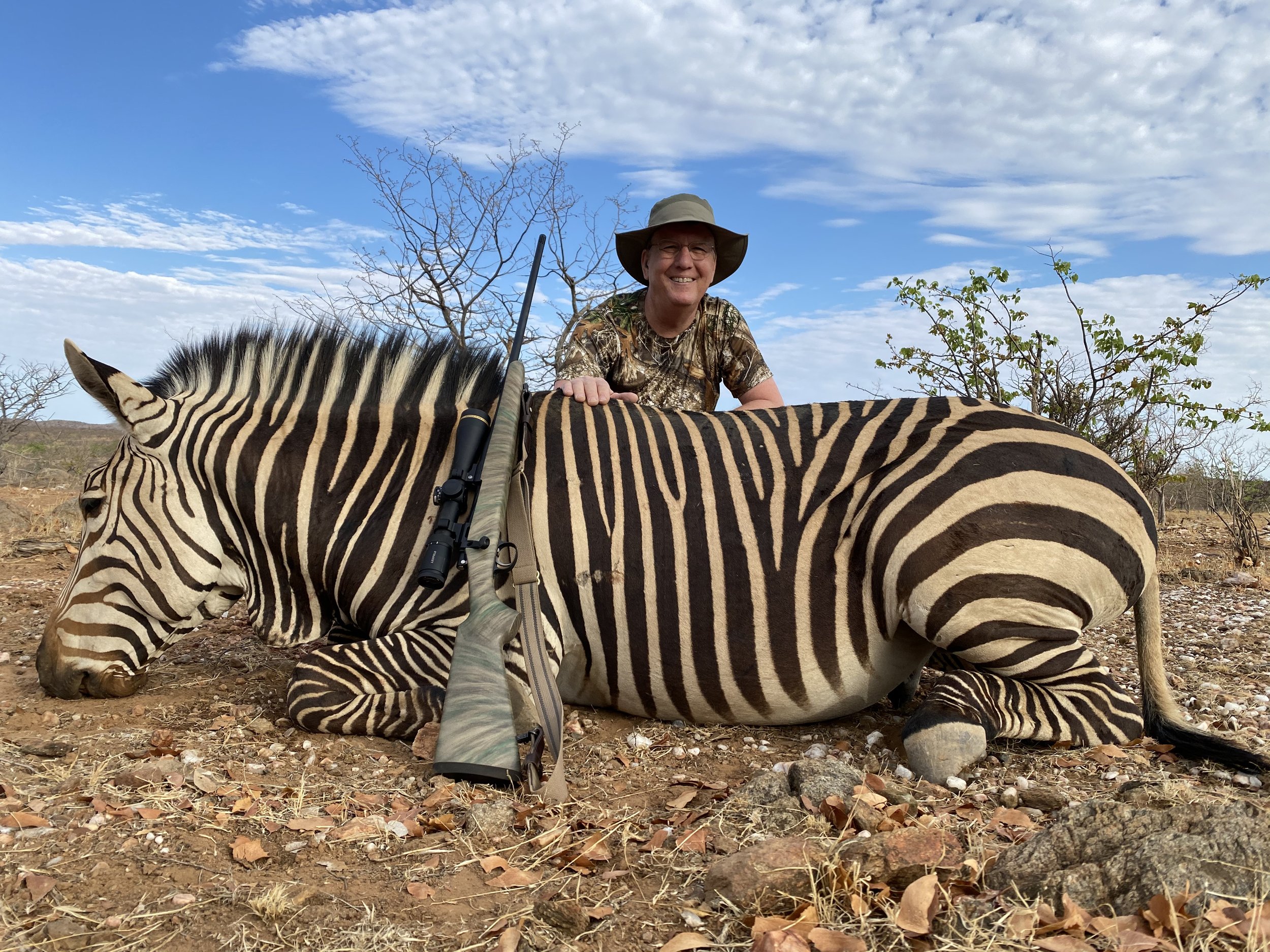Kaokoland Leopard - The Search Heats Up
As the first three days came and went, it became clear that we had a good chance of luring in one of the big males passing close to our bait sites. ‘My’ team chose bait and blind sites, hung the baits, and laid down scent trails (‘dragging’) based on intuition and observation – both gained from years of success in outwitting these extremely intelligent carnivores. A good example of the attention to detail was in their choosing to drag both the morning and afternoon of the first day of baiting. This gave the maximum scent trail. After the first day, and until a hit by a cat, they laid the scent trail only in the afternoon. They explained: since we were hunting during high summer, the scent would burn off during the heat of the day if laid down in the morning.
Another unique aspect of Kabous’ methodology involved how he measured a leopard’s spoor. Unlike what I had seen on videos and read in books; he did not measure the imprint of the entire foot; he used only the pad print. His logic was that when weight shifted to the foot, the tips of the toes would spread out, potentially resulting in an overestimate of the size of the cat. The pad, on the other hand, does not spread to the same degree when the leopard’s weight transfers to that foot. In Kaokoland, Kabous knew that a 2.5 inch, or greater, pad width indicated a mature male. A narrower pad likely reflected a female or juvenile male.
The morning bait check on the third day was a banner event. Not only did we have hits on multiple baits, but a big male had also hammered one of the baits, stripping large chunks from the zebra backstraps hung the day before. Because of the number of active baits, we were running low on meat. We remedied this by going out early the next morning and harvesting a beautiful Hartmann’s Mountain Zebra. Shot at 342 yards, the stallion went less than 70 yards before piling up. We could now provide our hungry cats – particularly the large males – with high-in-fat zebra quarters. This is just what we did on the bait site taken over by the large male.
We arrived the day after supplementing this bait to find that the male (as recorded by meat loss and the trail cam footage) had again fed well on ‘his’ zebra. That set-in motion the next phase of the match between hunters and trophy. Kabous uses the ‘BOB’ system – Bait, Obstacle, Blind – when he positions a bait. So, he already knew the location of the blind for each of his baits; this blind set-up was 64 yards from the bait tree. From no-blind-to-completed-blind at this site took a bit less than one hour. It was obvious that this was not the first rodeo for Kabous, Kapetja and Nico; I just tried to stay out of their way. Once the pop-up tent was in place with Mopane branches interweaved into a camouflage mesh around the tent’s frame, the blind blended seamlessly into the surrounding landscape. Kabous’ unique technique (prescience?!) appeared again at this point in the game.
As soon as we had the blind constructed, I asked Kabous what time that afternoon we would we be returning to sit in the blind? His answer surprised me. “We are going to leave this setup alone until tomorrow afternoon.” I suspect he knew that I wanted to pull the “I’m the paying client here, and I want to come back this afternoon” card. So, he explained, as if to a child (small words and slowly): “We have added more meat to the bait, erected a blind and walked around quite a bit this morning. I want to let the leopard get comfortable with the changes. If the cat is uncomfortable, he is likely to come investigate our blind. If we’re in it, he could blow out of here.” This strategy reflected two more of Kabous’ mantras: ‘getting to know your cat’ and ‘letting the cat become comfortable with the bait site.’ To say that I disagreed in not sitting that very evening would be a very large understatement. But, for once, I kept my arguments to myself.
Stay Tuned for - Kaokoland Leopard: The Final Scene

